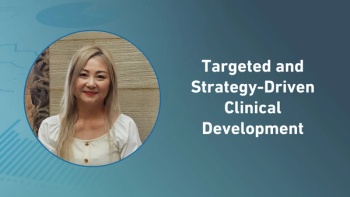
2025 DIA Global Annual Meeting: Public Sector Sets the Pace for AI in Drug Discovery and Approval
Peter Ronco, CEO, Emmes, explains how public sector leaders are driving innovation in clinical development through automation, long-term data utilization, and experimental trial design—despite the private sector dominating the conversation around artificial intelligence.
At the DIA Annual Meeting, Peter Ronco, CEO, Emmes, emphasized the underrecognized but impactful role of the public sector—particularly the NIH and FDA—in advancing tech-enabled clinical development. These agencies have pioneered the use of AI and large language models for tasks such as automating IND submissions, optimizing protocol design, and leveraging decades of complex data to improve trial execution and patient recruitment. Ronco also dispelled common misconceptions about AI, stressing that while it enhances efficiency, human oversight remains essential. To fully realize AI’s potential, organizations must invest in education, culture change, and talent development. Looking ahead, the vision is for AI-driven workflows to become standard practice, helping reduce animal testing, improve regulatory processes, and address health disparities, all while establishing clear ethical and privacy standards globally.
ACT: How is the public sector currently leading the charge in tech-enabled clinical development, and what can private industry learn from those efforts?
Ronco: I’m here at DIA this week, and if you walk around the Exhibition Center, every vendor is promoting something related to AI, data science, or large language models. If you attend any of the presentations—especially those from Big Pharma—they’re all highlighting their investments in data science, spanning both discovery and development.
In contrast, the public sector hasn’t done a great job of promoting its own work. But in reality, agencies like the NIH, FDA, and others across the US have made substantial contributions. They’ve invested across the full spectrum—from discovery to development to regulatory approval—on how data science and large language models can be applied to accelerate and improve the process of bringing new medicines to market.
ACT: Can you share specific examples from NIH-led innovations that have meaningfully impacted trial design or execution using AI or large language models?
Ronco: Sure—there are a few key examples. First, several NIH institutes have taken bold steps toward automation. They’re exploring how to automate IND submissions, protocol authoring, and the generation of tables, listings, and figures—essentially every aspect of the data pipeline—to make these processes more efficient.
Second, many of these institutes have access to extremely large, complex, and often decades-old datasets, including registries and long-term studies that go back 30, 40, even 50 years. These datasets are incredibly valuable for informing trial design and identifying potential trial participants.
Lastly, in my experience, the NIH is genuinely committed to experimentation. They’re actively exploring new ways of tackling challenges and are leveraging their deep data resources to train and refine AI models, which is a major strength.
Full Interview Summary: At the DIA Annual Meeting, Peter Ronco discussed how the public sector is quietly but effectively driving innovation in tech-enabled clinical development, often outpacing private industry in applying AI and data science. While commercial entities tend to be louder about their AI capabilities, public agencies like the NIH and FDA have led groundbreaking efforts in automating regulatory processes, leveraging large-scale longitudinal datasets, and supporting experimental applications of AI in protocol design and patient recruitment.
Specific NIH-led initiatives include the automation of IND submissions and protocol generation, as well as the use of legacy registries to identify trial participants and optimize study designs. These innovations have not only enhanced efficiency but also introduced a more scientifically rigorous approach to clinical research.
However, Ronco emphasized that several misconceptions around AI need to be addressed. One is the belief that AI can fully replace human oversight, whereas in reality, human judgment remains crucial for decision-making. Another is the assumption that AI is only useful for automating routine tasks; in fact, it also drives better protocol design and research methodology. Additionally, while some believe AI adoption will be slow, its rapid uptake may in fact be underestimated.
To integrate AI into operations, organizations must embrace a cultural shift. This includes transparent goal setting, cross-functional education on AI applications, talent development to support evolving skillsets, and a focus on measuring impact. Rather than being feared, AI should be viewed as a tool that removes tedious tasks and empowers researchers to focus on high-value work.
Looking ahead, Ronco envisions AI becoming a standard part of clinical research. Long-term goals include reducing animal testing, transforming regulatory reviews, improving post-market surveillance, addressing health disparities, and establishing global standards for ethical data use.
Newsletter
Stay current in clinical research with Applied Clinical Trials, providing expert insights, regulatory updates, and practical strategies for successful clinical trial design and execution.





.png)



.png)



.png)
.png)
